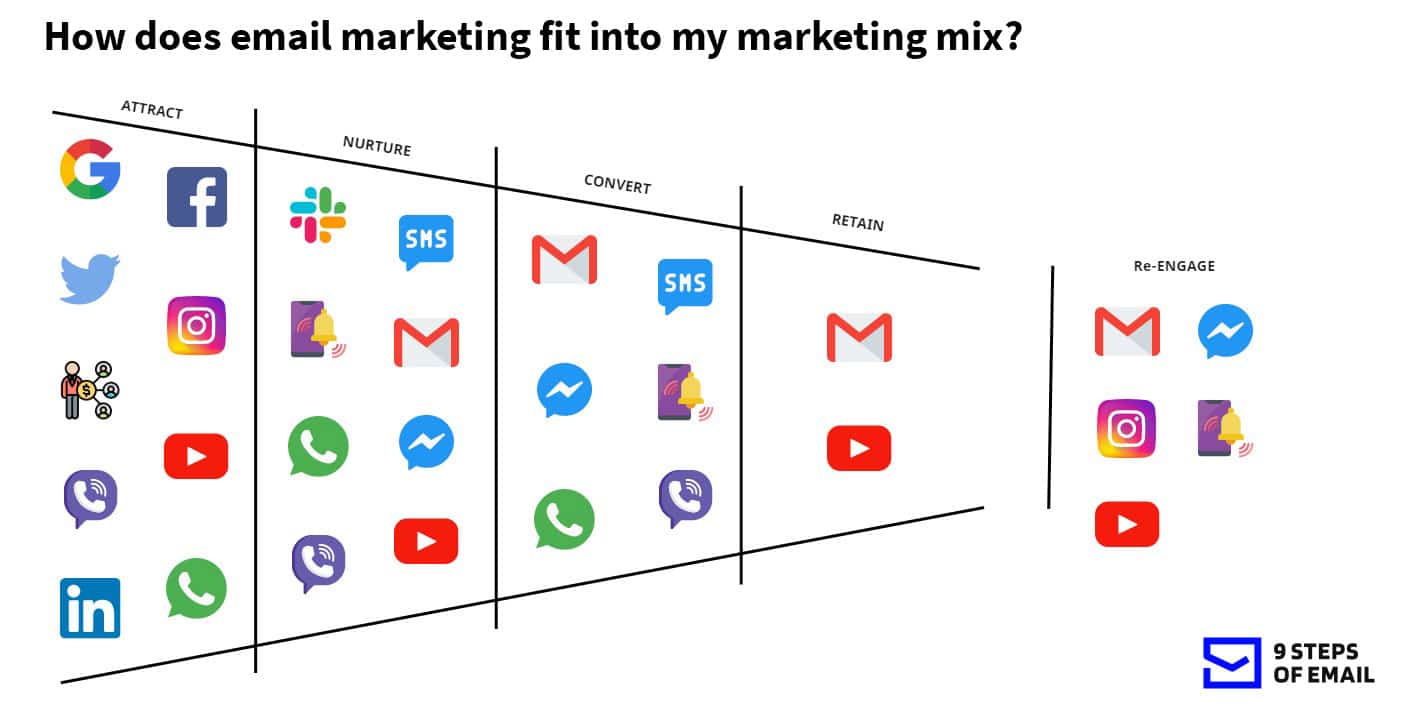Welcome & Course Overview
First of all, welcome to this course! You’re about to dive into something that’s going to give you a lot of interesting and useful information about email marketing automation. You’ll learn how to ask the right questions, at the right time, and finally, how to organize the work to get it all up and running.
Now, you’ve probably heard all the usual statistics about email marketing. Some claim ROIs of 40:1, others say each engaged subscriber is worth anywhere from $10 to $50. But you know what? None of this really matters. These are just content fillers that people add to their email-related articles to tell you why email is important and why you should get on the email bandwagon. If you’re already here, you probably have a pretty good idea of what email can do for your business.
The truth is, you won’t find anything quite like this course anywhere else. Why? Because the entire email industry revolves around selling either information or technology. Or both.
This course will heavily feature the 9 Steps of Email method, something I created back in 2013. Since then, it’s undergone several iterations and has been used in many different scenarios and industries: from dating sites and SaaS companies to info products and job portals. It’s probably safe to say it’ll work well for any digital product or service.
But here’s something important to understand: while we call them “steps,” they’re not really sequential. Think of it more as a checklist of things you need to have in place. You don’t have to follow them in exact order, but you do need to address them all.
Why Email Is Different
“But wait,” you might be thinking, “aren’t we really talking about marketing automation in general? Why focus just on email?”
Good question. Unlike Facebook and Google, email is a protocol of the Internet itself. It’s free, peer-to-peer, and without an owner.
Let’s dissect that.
Email is a protocol of the Internet
You might think of email as just another marketing channel, but it’s actually part of the Internet itself, unlike apps and services on the Web like Facebook or Google.
Email is over 50 years old, and its principles and protocols are encoded in the Internet itself, much like the Web or file sharing. And being the electronic inbox, it’s actually a personal part of the Internet.
As a matter of fact, I like to say that email is the most intimate place on the Internet.
This means there are very high stakes when it comes to email, and a lot of stakeholders who want to keep it safe and secure. You’ve got Internet Service Providers (ISPs) like Google, Microsoft, Apple, and Verizon Media as the biggest players, but there are also lots of smaller ones you’ve probably never heard of. Then there are organizations like the SpamHaus Project, SpamCop, M³AAWG, SORBS, and many others.
Email is free. Well, sort of.
Being a protocol of the Internet, email is free the same way the Internet is free. Hooking you up to it isn’t, though.
Think about it – laying down all the infrastructure, cables, people to manage it, and everything else has intrinsic costs. You pay your ISP to hook you up to the Internet, but from that moment on, using the Internet is free.
It’s the same with email. If you could muster the knowledge and the hours to build your own email server and maintain it, it’d be free. Sending an email to someone sure does feel free.
But here’s the thing: sending an email to thousands of people requires technology which, unless you know how to establish it yourself, costs money to use or have managed for you. This is where ESPs (Email Service Providers) come in – companies like MailChimp, SendGrid, ActiveCampaign, etc. They rent you the technology to send emails to thousands of different addresses with just a few clicks.
But – and this is crucial – you own the list of email addresses. That’s what separates email from advertising platforms like Google or Facebook. It’s not an audience you’re trying to target; it’s a list you can segment however you see fit.
The Place of Email Marketing in Your Marketing Mix
Zoom out enough, and most businesses run on a pretty simple model:
Attract
This is usually done through investing in ads (Google or Facebook’s networks), building strong organic exposure (SEO or social), or working with affiliates.
Nurture
This is where you establish authority and trustworthiness, making prospects believe you have the optimal solution to their problem.
Convert
Turn those visitors, subscribers, or free users into paying customers.
Retain
Once they’re in the system, make sure they keep paying.
Win Back
Re-engage those who’ve drifted away.

Email is unique because it can handle all of these jobs except the first one. When you combine that capability with excellent ROI (from properly done email marketing) and a relatively low click cost, you’ve got something special.
Speaking of That Low Cost…
Let’s run through a quick example:
Say you have 10,000 emails to send to. And let’s assume they’ve all opted in, know well who you are, and some of them are actually looking forward to an email from you (more on this later).
Sending to 10K will cost you anywhere from $50 to $100. Let’s say $75.
Your open rate will be around 20% because you’re sending to a clean and well-nurtured list.
Your CTR (clicks to opens) will be around 25% because your message is enticing. Basically, that means every fourth person who opens will click through.
That means you’ll get around 500 clicks for $75. That’s $0.15 per click.
Now, if you’re spamming (or “cold emailing” as some like to say), it’ll be much worse. But if people are actually looking forward to your emails because you’ve established yourself as an authority or a desirable brand, it’ll be much better.
Core Principles in Email
Two basic principles have governed email since its inception:
1. Relevancy
This goes back to the nature of peer-to-peer messaging: I send you a message, you receive it and reply back.
Things went a bit south during the ’90s when people started to realize the power of the online mailbox and email SPAM was born. Up until several years ago, things weren’t great. Users yearned for filtering solutions that fight spam, and companies answered by providing them.
That shifted power from marketers to mailbox providers, who remain the grand masters of the industry to this day.
Nothing gets in or out if they don’t allow it.
If they put you on their blacklist, you immediately lose a big chunk of your list.
Even if you’re using a premium ESP that handles many technical aspects of mass email sending, you still have to worry about being relevant enough so that your in-email engagement percentage doesn’t fall below a certain threshold that those mailbox providers have set.
Which threshold? Well, you can never know. Tough, isn’t it?
But you might say, “Yes, but all marketing needs to be relevant! If I post a Facebook ad and it’s not relevant, people won’t click on it.” And you’re right. But…
What separates such “offenses” on Facebook or Google from email is that Facebook won’t block your account (unless you’ve done something really terrible) for not being relevant. They’ll just up the price of a click. Pretty much the same with Google.
But email providers will block you. Put you on a blacklist, which then tells everyone that you’re an offender. It will be bad – you’ll have to beg them to remove you, and if they won’t, you’ll have to redo your sending domain and IP addresses and set up everything from scratch.
By the way, this is what spammers do all the time. “Swapping IPs” they call it.
SEO is similar, actually. Google might severely punish or even block your domain from being shown in the SERPs if you simply don’t abide by their rules.
Come to think of it, SEO is becoming more and more similar to email marketing. It’s complex, technical, and requires relevancy, authority, and engagement.
Security
Security is deeply rooted in email technology. This is why the front-end technology of email is changing so slowly: almost no scripts are allowed in the email message body and, until recently, no GIFs were either.
Because email is such a private space, offenders who are clever enough to trick you might cause great damage. This is why mailbox providers prefer to lock off all the fancy functionalities. Better safe than sorry.
Setting Expectations
What I want you to take away from all this is that you need to embed both principles – relevancy and security – into your marketing automation program. Without them, no matter how classy your copy, sassy your design, or techy your code is, you’ll get nowhere.
You can’t expect anything else from email other than getting someone interested to learn more about what you have to say.
Let me repeat this because it’s absolutely crucial:
You can’t expect anything else from email other than getting someone interested to learn more about what you have to say.
That interest is represented in a click through the link in your email.
That’s it.
You can’t expect anything more.
But nothing less as well.
What’s Coming Next
Throughout this course, we’ll start with the basic questions like identifying your personas and value propositions (of the email channel). Then we’ll go over the flows to, inside, and away from the product (opt-in, conversion points, and opt-out).
After that, we’ll build a matrix of messages and their respective triggers. Then we’ll dive into creating individual email messages, writing the copy, coding, and QAing them. Finally, we’ll talk about dynamic automatic segmentation, sending, and actually delivering the message to the mailbox.
The last phase is analyzing the data and identifying where we can improve.
Ready to begin? Let’s move on to Step 1, where we’ll help you identify the goals you’ll assign to the email channel and get you to answer three big questions that most marketers never think to ask.
